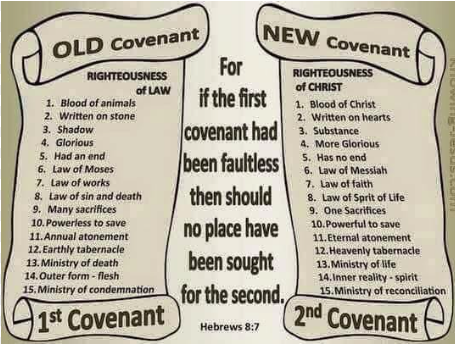The Old Testament and the New Testament are two main sections of the Christian Bible, and they represent different periods, themes, and theological concepts.
- Time Period and Origin:
- Old Testament: The Old Testament primarily focuses on the history and religious teachings of the ancient Israelites. It covers a vast time span, starting from the creation of the world, as described in the book of Genesis, to the period before the birth of Jesus Christ.
- New Testament: The New Testament revolves around the life, teachings, death, and resurrection of Jesus Christ and the subsequent growth of early Christianity. It covers events from approximately the birth of Jesus Christ to a few decades after his death.
- Covenantal Relationship:
- Old Testament: The Old Testament is largely centered on the covenant relationship between God and the Israelites. This relationship is established through figures like Abraham, Moses, and David, with laws, rituals, and prophecies playing significant roles.
- New Testament: The New Testament introduces a new covenant between God and humanity, fulfilled through Jesus Christ. This covenant emphasizes forgiveness, grace, and salvation for all believers, transcending ethnic or national boundaries.
- Themes and Focus:
- Old Testament: Major themes in the Old Testament include creation, the exodus, the establishment of the Mosaic Law, the rise and fall of Israelite kingdoms, prophecies of future events and the Messiah, and the concept of a chosen people.
- New Testament: The New Testament emphasizes teachings about love, redemption, salvation, faith, and the establishment of the Church. It contains four Gospels (Matthew, Mark, Luke, and John) that narrate the life and teachings of Jesus Christ, followed by the Acts of the Apostles, epistles (letters), and the Book of Revelation.
- Literary Styles:
- Old Testament: The Old Testament comprises various literary genres, including historical narratives, laws, poetry (e.g., Psalms), wisdom literature (e.g., Proverbs), and prophetic writings (e.g., Isaiah, Jeremiah).
- New Testament: The New Testament includes historical accounts, letters written by early Christian leaders (epistles), and apocalyptic literature (e.g., Revelation). The Gospels offer biographical narratives of Jesus’ life and teachings.
- Role of Jesus Christ:
- Old Testament: While the Old Testament contains prophecies and foreshadows the coming of a Messiah, Jesus Christ’s life and ministry are primarily addressed in the New Testament.
- New Testament: Jesus Christ is central to the New Testament. His teachings, miracles, crucifixion, and resurrection are foundational to Christian beliefs. The New Testament interprets Jesus as the fulfillment of Old Testament prophecies and the embodiment of God’s love and redemption for humanity.
In summary, while both the Old and New Testaments are integral to Christian scripture, they differ in their historical contexts, central themes, and focus. The Old Testament lays the foundation with its covenantal relationship and prophecies, while the New Testament reveals the fulfillment of those promises through Jesus Christ and the establishment of the Christian faith.
